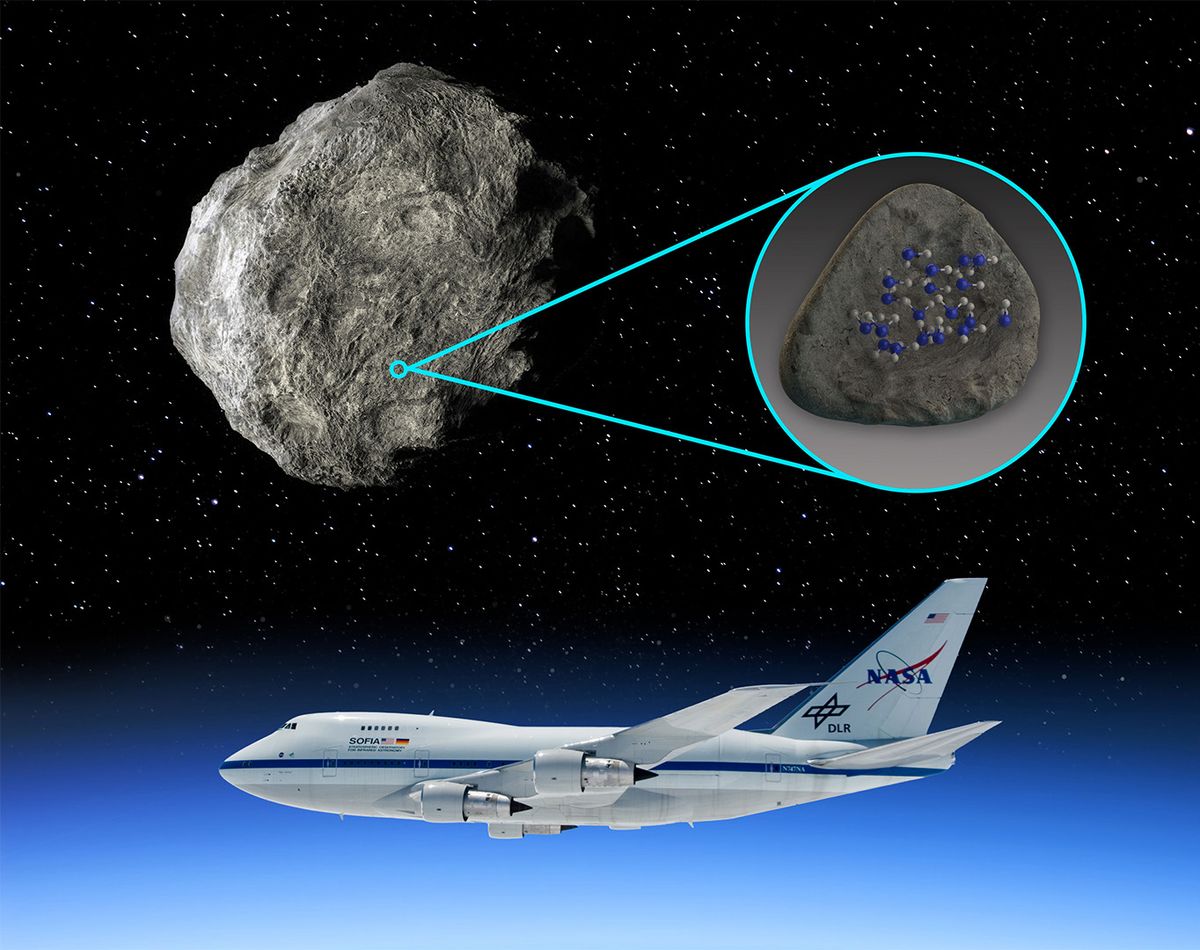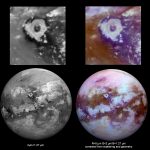Scientists discovered water molecules on the surface of two asteroids for the first time. The researchers made the finding using data from NASA’s now-defunct SOFIA aerial observatory.
Key takeaways
- Scientists found water molecules on the surface of two asteroids, Iris and Massalia, using data from NASA’s retired SOFIA observatory.
- This is the first time water has been detected on the surface of asteroids in orbit, providing new insights into the distribution of water in our solar system.
- The water was discovered using SOFIA’s FORCAST instrument, which identified a unique wavelength of light indicating the presence of water molecules on these asteroids.
- The discovery supports the theory that asteroids, which formed in different parts of the solar nebula, could have delivered water to Earth, essential for life as we know it.
- Understanding the distribution of water on asteroids helps scientists locate other potential life-supporting environments in our solar system and beyond.

Water molecules were discovered on the surface of an asteroid for the first time, providing fresh information regarding the dispersal of water in our solar system.
Scientists examined four silicate-rich asteroids using data collected by the now-defunct Stratospheric Observatory for Infrared Astronomy (SOFIA), a telescope-equipped plane run by NASA and the German Aerospace Center.
SOFIA’s Faint Object InfraRed Camera (FORCAST) sensor discovered that two of the asteroids, Iris and Massalia, have a unique wavelength of light that indicates the existence of water molecules on their surface, according to a recent research.
“Asteroids are leftovers from the planetary formation process, so their compositions vary depending on where they formed in the solar nebula,” research lead author Anicia Arredondo of the Southwest Research Institute in San Antonio said in a statement. “Of particular interest is the distribution of water on asteroids, because that can shed light on how water was delivered to Earth.”
Water molecules had previously been spotted in asteroid samples returned to Earth, but this is the first time they have been discovered on the surface of an asteroid in orbit. SOFIA previously discovered comparable evidence of water on the moon’s surface, in one of the biggest craters in its southern hemisphere.
“We detected a feature that is unambiguously attributed to molecular water on the asteroids Iris and Massalia,” Arredondo said in a statement. “We based our research on the team’s discovery of molecular water on the moon’s sunlit surface. We assumed we could utilize SOFIA to detect this spectral signature on other bodies.”

SOFIA images of the moon discovered the equivalent of a 12-ounce bottle of water trapped in a cubic meter of mineral-bound dirt distributed throughout the lunar surface. In the latest study, the SwRI scientists discovered that the amount of water on the two asteroids was similar to that seen on the moon and might also be coupled to minerals, like on the lunar surface.
Iris and Massalia, which are 124 miles (199 kilometers) and 84 miles (135 kilometers) in diameter, respectively, have comparable orbits and travel an average distance of 2.39 astronomical units (AU), or sun-Earth distances, from the sun.
“Anhydrous, or dry, silicate asteroids form close to the sun, while icy materials coalesce farther out,” according to the statement. This is because it was considered that any water on the surface of objects in the inner solar system would evaporate due to the sun’s heat. “Understanding the location of asteroids and their compositions tells us how materials in the solar nebula were distributed and have evolved since formation.”
As a result, the discoveries at Iris and Massalia show that some silicate asteroids can retain part of their water over eons and may be more frequent in the inner solar system than previously assumed. In fact, asteroids are thought to be the major source of Earth’s water, supplying the ingredients required for life as we know it. Understanding the distribution of water in space may allow researchers to better determine where to look for other types of possible life, both in our solar system and elsewhere.
Their findings were published in The Planetary Science Journal.
Originally published at Space.com.


